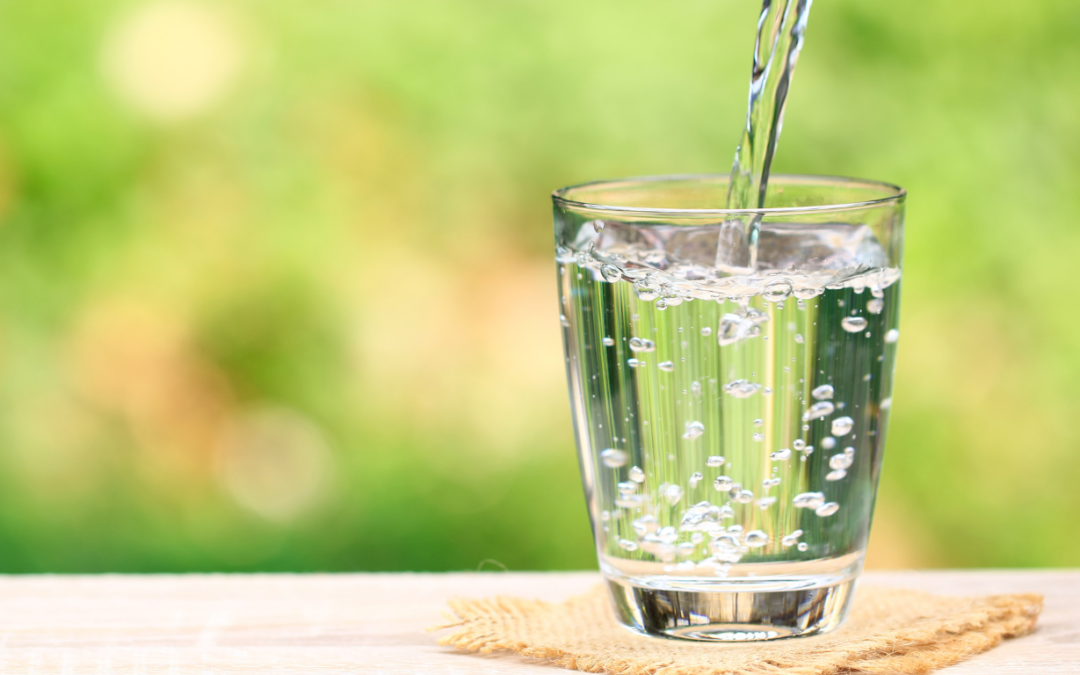I’ve been on a mission this year, and it started because of something I experienced myself that led to an increase in some of my health challenges. Turns out, I was chronically dehydrated! Oh, I was drinking PLENTY of water. I would guzzle water all day long, and it would just come right back out. My skin was always parched. I always felt thirsty. I was feeling dizzy. My muscles were cramping. And yet, it seemed I just could not get the water to stay in me.
What was going on? Well, friends…we installed a reverse osmosis water filtration system a couple of years ago because we found higher levels of arsenic in our well water than we were comfortable with. It felt like a great investment in our health (and I still think it was), but little did I know, there was a hidden health danger to this “pure” water.
Reverse Osmosis (RO) systems are fantastic for filtering water to eliminate nearly everything – pollutants, bacteria, chemicals, minerals….oh, yeah, did I say minerals? For example, RO water removes 92 to 99% of calcium and magnesium. Well, it turns out, that our body runs on minerals! They are the foundation of biological makeup. So, what happens when you remove them from your water?
Reverse osmosis removes a wide range of dissolved salts, minerals, and contaminants from water. As a result, the RO water is relatively “pure” and lacks dissolved ions like calcium, magnesium, and sodium. This makes it more aggressive in attempting to restore its mineral content, and as a result, it may dissolve substances from materials it comes into contact with more readily.
When people rely heavily on RO water for hydration, they might not obtain enough minerals from their drinking water, potentially contributing to mineral deficiencies over time. What’s more, when the body lacks sufficient minerals from drinking water, it may compensate by pulling minerals from bones and tissues, leading to increased mineral excretion in urine. This could potentially contribute to mineral imbalances in the body over time.
Electrolytes like sodium, potassium, and magnesium are crucial for maintaining proper fluid balance, nerve function, muscle contraction, and overall cellular health. Consuming water devoid of these minerals may disrupt electrolyte balance over time, leading to symptoms like muscle cramps, weakness, fatigue, and even heart irregularities. The World Health Organization (WHO) has raised concerns about the long-term consumption of demineralized water. Their reports highlight potential risks, such as:
- Increased urinary excretion of essential minerals like calcium and magnesium.
- Disruption of electrolyte balance and acid-base equilibrium.
- Increased risk of certain health conditions if dietary compensation is inadequate.
Water expert, Jen Isabel Friend, also highlights that these minerals are essential for health, as they contribute to hydration, cellular communication, and other bodily functions. RO water, due to its high-pressure filtration process, is thought to lose this natural structure. Jen suggests this may make it less energetically aligned with the body and reduce its vitality. Jen strongly advocates for enhancing RO water with minerals and structural techniques or choosing natural water sources to maximize hydration, vitality, and alignment with the body’s energetic needs.
For these reasons, if we are filtering our water it is important to add these essential minerals back in. I’ll explain how to do this below.
Regardless of the above-mentioned risks, I’m still a big fan of reverse osmosis water because of all of the contaminants we are exposed to through our drinking water day in and day out. Things like heavy metals, chlorine and other disinfectants, hormones, pharmaceuticals, pesticides, herbicides, endocrine disruptors, microplastics, and more. Yes, there are other filtration options as well, but most of the filtration systems that are worth considering are going to cost quite a bit more than a Reverse Osmosis system.
By and large, from the reading I have done, I would suggest staying away from cheap carbon filters like Pur and Brita. These filters don’t remove a lot of important contaminants and can actually increase the amount of contaminants if the filters are not changed soon enough. My top choice of water would be high-quality spring water right from the source, but most of us don’t really have that as an option.
So, what’s a person to do?
We need to be adding the minerals back into our water. I’m going to give you a few options, but the one I’ve come to like the most is making my own mixture of electrolytes to add back into my water. All of the options below have helped me tremendously. I noticed some benefits immediately, but after making sure to add minerals back into all of my water over the course of many months I can honestly say that I’m noticing some big shifts.
This is the recipe I’ve been using. I will include links to the ingredients on Amazon. (Just to let you know, these are affiliate links. I make a very small amount of commission from them if you choose to purchase from these links but by no means do I want you to feel pressured to use them).

HOMEMADE MINERAL MIX – NO SUGAR- FOR REGULAR WATER CONSUMPTION
- 4 Parts French Gray Sea Salt (840 mg of sodium per 1/2 tsp) – French Gray Sea Salt also contains trace minerals, which are beneficial to your overall mineral status. If you prefer, you can also choose Celtic Sea Salt or Real Pink Salt.
- 2 Parts potassium chloride (730mg of potassium per 1/4 tsp)
- 1 Part magnesium chloride (60mg of magnesium per 1/8 tsp)
TO MAKE:
- Mix all of these ingredients into a glass jar in the proper ratios, then stir and shake very well to evenly distribute the granules.
- When you are ready to make your water, you can vary the amount of powder you add to your preference but as a general starting point, you can add 1/2 to 1 tsp of the powder to 4 cups (1 Liter) of water (or add more if you need extra electrolytes, say post-workout).
HOMEMADE ELECTROLYTE MIX – SUGAR ADDED – FOR ENHANCED HYDRATION
- Follow the above recipe, but for every amount of salt you use, add an equal amount of sugar. You can substitute regular sugar with coconut sugar or maple sugar for a natural twist, and adjust the sugar to taste.
- To enhance the flavor and health benefits, consider adding a splash of lemon juice or apple cider vinegar to your glass when mixing the minerals with water. (Avoid adding these to the jar of stored mineral mix to maintain its shelf life.) Feel free to experiment with the amounts to find the perfect balance that works for you.
- Adding sugar, particularly in the form of glucose, plays a key role in facilitating the absorption of electrolytes, especially sodium, in the intestines. This occurs through a process called sodium-glucose co-transport, which is vital for effective hydration.
- This mechanism is especially beneficial during dehydration caused by conditions such as diarrhea, vomiting, or intense physical exertion, as it allows for rapid electrolyte and fluid replenishment.
PRE-MADE OPTIONS
If you would prefer to buy minerals/electrolytes to add back in rather than make your own, here are a few of my favorites:
- E-Lyte (This is a lower sodium, higher magnesium option, for those who prefer that. It does not contain added flavoring. I like the taste of this one.)
- LMNT (IF you like convenient packets plus tasty flavoring without a bunch of icky fillers, this brand is a great option.)
- Trace Minerals 40,000 Volts (I also really like the taste of this one and it doesn’t contain added flavoring). Trace Minerals also makes convenient dosed packets with flavoring.)
I’d love to hear if you try making your own electrolyte powder, or if you learned something new from this post.
Be Well,
KImberly





